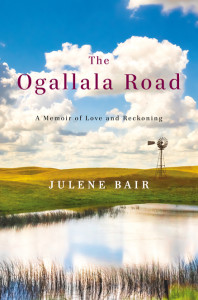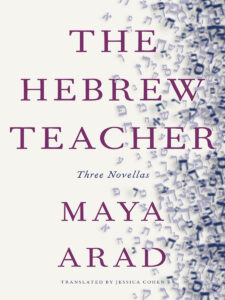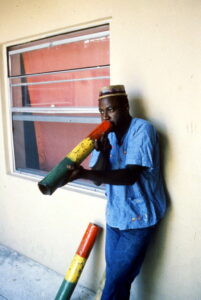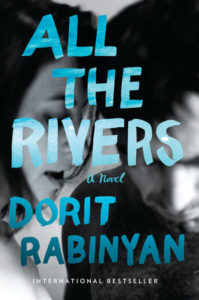 Is love enough? An Israeli and Palestinian love story (seven months in New York City after 9/11, mostly): Thanks to Jessica Cohen’s beautiful translation of Israeli writer Dorit Rabinyan’s All the Rivers, this breathtaking novel is now ours to read. If the passionate prose soars in English, what does it sound like in the deep and resonant intonations of Hebrew?
Is love enough? An Israeli and Palestinian love story (seven months in New York City after 9/11, mostly): Thanks to Jessica Cohen’s beautiful translation of Israeli writer Dorit Rabinyan’s All the Rivers, this breathtaking novel is now ours to read. If the passionate prose soars in English, what does it sound like in the deep and resonant intonations of Hebrew?
I ask because this is a novel of passion about an all-consuming love affair between an Israeli woman and a Palestinian man converging at a time and place that’s a perfect storm: New York City in the immediate aftermath of 9/11.
In fact, everything about this novel feels immediate. From the moment Liat, 29, met Hilmi, 27, at a Greenwich Village café she “felt an immediate intimacy” as though she’d known him for “a thousand years.” He felt that connection too; within three hours he was tenderly calling her Bazi, “sweet pea.” And she immediately grasped he’d be a once-in-a-lifetime love that couldn’t possibly last. An impossible love, a forbidden love, so fraught with complications, fears, and realities it threatened her identity, heritage, family at its core.
This magnetic “push and pull” romantic drama is marked by deeply conflicting emotions and the urgency of time. Liat is a visiting Fulbright scholar getting her master’s in Hebrew translation at Tel Aviv University, due home in seven months to fulfill teaching commitments. Her scholarly pursuits fit her conservatism, and highlight the importance of translation as a career. Rabinyan and Cohen’s gorgeous literary collaboration case in point.
Hilmi is the opposite. With his hair a “sea of frizzy charcoal curls,” in contrast to her tight ponytail, his image befits his artistry and idealism. He’s been in the city for four years on an artist’s visa, teaching Arabic and working on a “dreaming-boy” project: a series of forty autobiographical drawings consuming his Brooklyn bedroom walls and floating from the ceilings like Chagall’s “floating lovers.” Awesome, vivid, dreamy echoing their love and the prose.
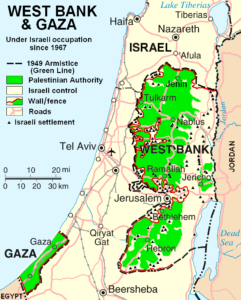 How bitterly ironic Hilmi’s home is just forty miles from Liat’s, yet worlds apart. His large, loving family lives in the Palestinian territories occupied by Israel, one of the controversial settlements in the West Bank.
How bitterly ironic Hilmi’s home is just forty miles from Liat’s, yet worlds apart. His large, loving family lives in the Palestinian territories occupied by Israel, one of the controversial settlements in the West Bank.
Is it any wonder, then, that the seven months Liat and Hilmi spend together are “mad and beautiful days?” The intensity and ephemerality of a love that “stunned and excited” all the time is conveyed in long, flowing, heartfelt prose. Paragraphs consume pages, structured in brief chapters, as if the author knows she must let the reader keep coming up for air:
“…moments when I can feel he understands me, that he can make his way in and out of my mind’s twists and turns, that I can look at his wise eyes and see the wheels of his mind spinning in perfect harmony with my thoughts. The ease, the satisfaction, the comfort that fills me in those moments. The curiosity and delight of pondering these things together. In those moments when we talk and talk and talk, I feel like I have been a sort of enigma to myself, a difficult riddle to solve, he has come along to know me and to answer all my questions … I feel I am almost becoming him, so close to him and infused with him that I can practically feel what it is like to be him.”
The novel stuns and excites in the way imagery and metaphors intensify emotions and themes. That might account for Rabinyan receiving the 2015 Bernstein Prize for Israeli writers under fifty (the 2014 novel was originally published in English as Borderlife), and that it was also banned from Israeli classrooms. Utterly adult, intimate, so we can see why young adults would also be drawn to it. So many complex questions, so few answers.
Lest the novel’s anxious time period of heightened suspicions does not fully register, it jolts by opening with the FBI knocking on Liat’s door in the Village (she’s apartment sitting for Israeli friends) a mere hours before meeting Hilmi. Someone spotted this olive-skinned, “Middle Eastern looking” woman, contacted the authorities.
If that terrific reality is not stormy enough a backdrop for the couple’s emotional storm, the author ups the ante by wrapping their love in a wicked winter, one of the worst on record (actually 2002 was one of the warmest). The symbolic fierceness of the weather pummels throughout: At first, the freezing weather huddles the lovers as if it’s just the two of them against the world. New York City beckons and they explore its neighborhoods, a treat for all who know and love the city. As their days become numbered and the limits of their relationship are tested, wintertime slides “gloomy and foggy like a film noir,” then so freezing “cold that it shocks your entire being and makes it lose hope.” As the couple’s heated arguments are triggered over politics, the weather ices like people’s prejudices.
The power of art is added to this tumultuous mix. Love has inspired a “golden time” for Hilmi’s creativity. An outpouring that possesses, exhausts, makes him weep.
As the conflict between their homelands erupts – the Iraq War – we feel like weeping too. For this is a novel about many kinds of passionate love, including love of country.
Do you believe in happy endings? Hilmi, the dreamer, does; Liat, the pragmatist does not. Hilmi believes peace will come; Liat, enraged, views his wishful thinking as “binational fantasies.” She’s surprised how alarmingly deep-seated her outlook is, more aligned with the right-wing posture of Israel’s Prime Minister Benjamin Netanyahu.
As I was puzzling over Liat and Hilmi’s divergent political ideologies, not even sure if Netanyahu supports a two-state solution, The Washington Post published an excellent, lengthy piece laying out how problematic swapping land for peace has devolved, how enmeshed Israeli society is in the occupied territories.
While this is first and foremost a novel about an intense romance racing against a loud ticking clock, the burning question as to whether peace can ever be achieved in the Middle East hits us in a new light. It’s striking how improbable it seems for love and politics to be separated, no matter how profound that love. As much as we hope love overcomes, equally it feels hopeless.
Of course that’s the heart-tugging question that burns here. Will love be enough?
Lorraine
